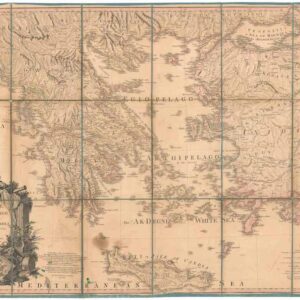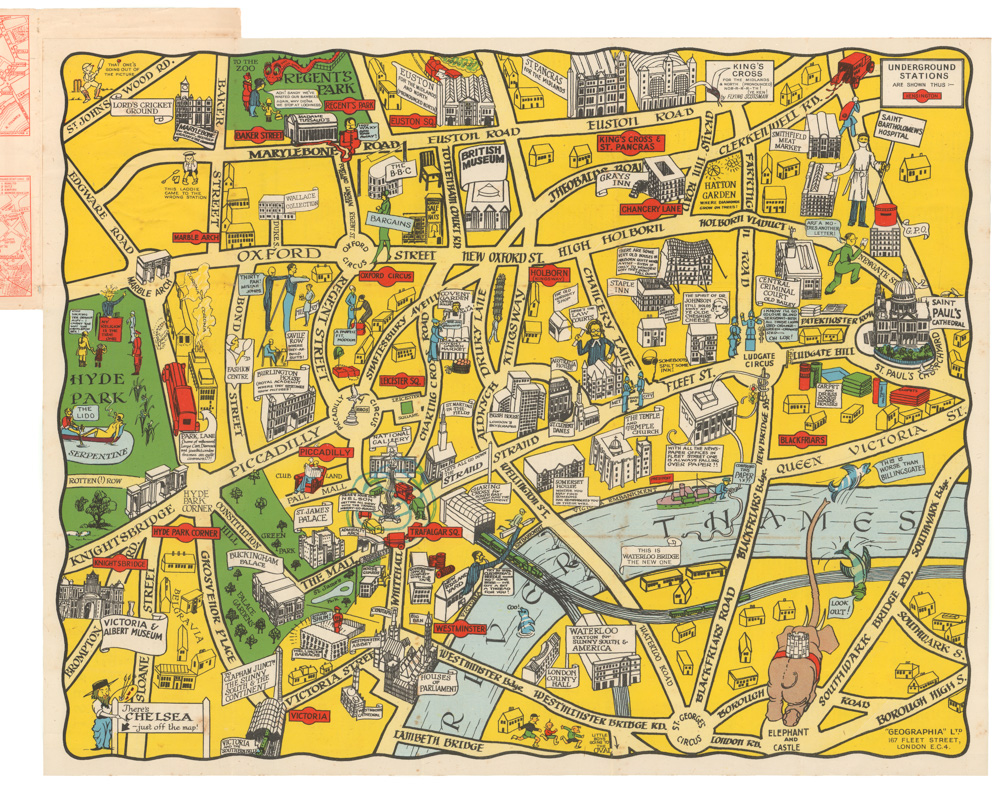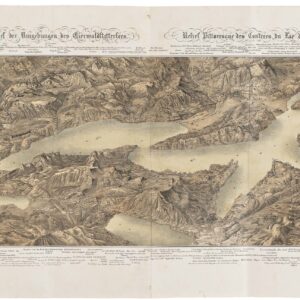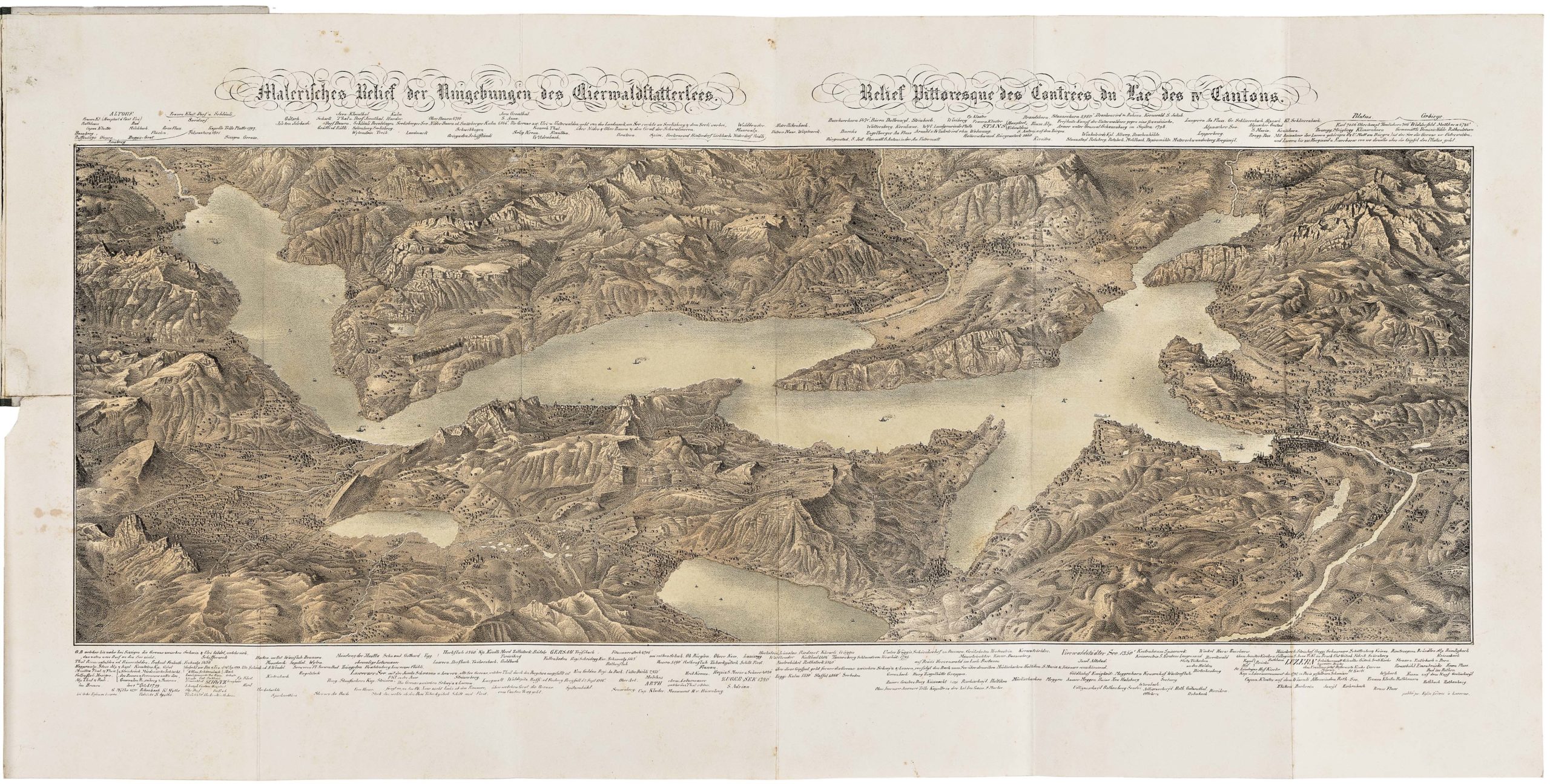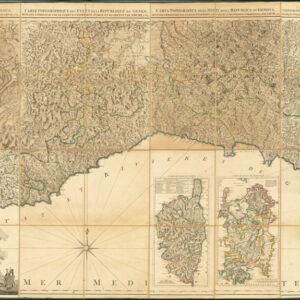A never-folded example of Frederick W. Rose’s iconic 1899 caricature map of Europe on a collision course.
Angling in Troubled Waters. A Serio-Comic Map of Europe by Frederick W. Rose, Author of the “Octopus” Map of Europe.
Out of stock
Description
A satirical rendition of Europe at the dawn of the 20th century, portraying the growing political tensions that lead up to World War I and the Russian Revolution.
This delightful chromolithograph was drawn by Matt Hewerdine based on the designs of Frederick W. Rose, an English illustrator and satirist active in the second half of the 19th century. It is one in a series of highly decorative and satirical pictorial maps produced by Rose during the period of European industrialization. While pictorial and satirical maps had been produced prior to Rose’s activities, most collectors agree that no one compiled this type of chart with the finesse and balance between ironic comedy and aesthetics that Rose achieved. Consequently, Angling in Troubled Waters is one of Rose’s most renowned maps and a milestone piece for any collection dealing with the period or genre.
As indicated in the title, by the time this map was published Rose had already achieved some renown for his earlier work – in particular his famous Octopus Map of Europe (1877). Angling employs the same general structure as the Octopus map, forming the outline of Europe by drawing individual nations as satirical characters representing a particular set of values or specific references to political realities. At the same time – and this is part of what makes Rose’s work so remarkable – each nation’s characteristics can be linked to an overall theme, in this case the symbolic act of fishing (or angling).
The map presupposes that the viewer has a basic understanding of the political divisions and overall situation in Europe at the time. Much of the unabashed symbolism in this chart is highly time-specific and would not necessarily make sense a decade or two later (or earlier for that matter). While the characters (nations) are part of a coherent whole both visually and geographically, each at the same time tells its own story, creating a tapestry of political interests and entanglements that together constitute a depiction of the state of affairs in Europe at the time. It is, in fact, quite genius. In many cases, the individual nations have been rendered in ways that pertain to very specific events from the late 1890s. In fact, as we shall see in the discussion of the individual characters below, a lot of this map’s symbolism draws on international events dating to 1898, only a year before the map’s initial publication.
Rose designed his maps to capture an idea or concern that he wished to highlight by tying them to a visual theme. In this case, the fishing metaphor is efficiently used to illustrate the external interests that most European nations entertained at the time. There are four nations physically engaged in actual fishing, all of which in this period still entertained imperial aspirations, but even for the nations not engaged in the act of fishing, the metaphor applies in the form of nets and landed catches. The four angling players are England, France, Tsarist Russia, and the Ottoman Empire. They have been poignantly represented on the map, with the national characters of each holding physical lines, representing the direction in which their interests as a nation lie. As such, it is both a commentary on the unsustainable and crumbling hegemonies of colonial empire, as well as an expression of deep concern regarding the growing internal tensions of Europe.
Being a figurative and highly symbolic map, rich in detail, the publishers did not want the images to be misinterpreted or taken out of context. For this reason, two descriptive legends detailing the symbolic character of each nation is provided in the lower corners of the map. These, combined with our own study of the map, allow us to make a few comments regarding the manner in which each European nation has been depicted, as well as the motivation behind these symbolic depictions.
England is represented as John Bull – an imagined personification of the English, much like Uncle Sam is for Americans. Over his shoulder he already carries several nets (Ireland and Scotland), which contain a rich bounty of colonial possessions (including Burma). At his feet we find the key resources of ships, money, and men, and in his hands a fishing rod, at the end of which hangs a crocodile that represents Britain’s colonial aspirations in Egypt.
France is represented as the internal struggle between civil and military power, aptly symbolized by the 1898 Dreyfus Affair. This scandal was an expression of the latent and insidious anti-Semitism inherent in European societies in the late 19th century, especially in times of economic hardship. The dishonorable and highly public dismissal of this loyal French officer, whose only crime was his Jewish background, resonated throughout the western world and set in motion a number of events still affecting the world today. In the crowd witnessing Dreyfus’ humiliation was a young Jewish journalist and intellectual from Vienna, who was so appalled by the scene that he became convinced that even the principles of modernity could not uproot the hatred of Jews in Europe. His name was Theodore Herzl, and in the years following the Dreyfus affair he would distill his thoughts into the principles of Zionism and write his famous manifesto, Der Judenstaat, which called for the creation of an actual Jewish State.
In southern France, we see a reference to Panama, which symbolizes another major French scandal that took place a few years before the Dreyfus affair. A French company, in collaboration with two German-Jewish businessmen (Jacques Reinach & Cornelius Herz), lost circa half a billion Francs on the first and failed Panama Canal project. Hannah Arendt, a famous Jewish intellectual and historian, has argued that it was the involvement of German Jews in this scandal that helped re-ignite anti-Semitic sentiments in France and ultimately lead to the Dreyfus Affair.
In general, France does not seem to enjoy much recognition on the map. In addition to bungling the Panama Canal, French colonial influence in Africa is waning as well, represented by a fish labeled ‘Fashoda.’ The fish has escaped the French line, a reference to a failed 1898 military campaign, in which the French army attempted to seize control of the White Nile in order to prevent British expansion into Mahdi Sudan.
From Corsica, we see a diminutive version of the once great Napoleon, looking on as France throws away her global influence and presence. Despite the gloomy outlook, France has securely landed two good catches in the form of Tunis and Tonquin (referring to its North African and Vietnamese possessions).
With Spain, we see the portrayal of a once great nation that has undergone the massive social and economic changes that seem to be the destiny of Europe’s other great colonial powers. Dressed as a matador, King Alfonso XIII looks with melancholy to the southwest, where three fish have been lost off lines extending west, out of the map. These represent Spain’s loss of Puerto Rico, Cuba, and the Philippines to the United States following the Treaty of Paris, which formally ended the Spanish-American War (1898). Behind him, in a malevolent pose that seems to initiate an attack from behind, we see the looming figure of Infante or Don Carlos. As Duke of Madrid, Don Carlos was the senior living member of the House of Bourbon, and laid claim to the thrones of both Spain and France. Despite functioning as the de facto ruler of Spain for four years following the Third Carlist War, he never actually achieved formal ascension to any European throne.
In Portugal we see a well-dressed figure holding a large fish inscribed ‘Delagoa.’ The man represents the Portuguese state, and Delagoa is the region along the eastern coast of southern Africa. The image constitutes a symbolic reference to Portugal’s very lucrative sale of Mozambique to private corporations largely controlled by British financiers. With appropriate irony the caption reads: “Portugal seems likely to dispose of his catch to advantage; whereby his empty purse may assume rounder proportions.”
And who other than the imposing figure of the Kaiser could represent the German Empire, whose many successes are acknowledged on the map, both in print and visually. An important detail, highly pertinent to the specific time in which this map was created, is a single fish stringed around the Kaiser’s waist. Labeled ‘Kiao-Chau,’ it refers to a deal with Early Republican China in which Germany leased a large territory in Jiaozhou Bay on the Shangdong Peninsula. Germany’s presence in East Asia made a huge impact on its global standing as an industrial power and Jiaozhou soon became the East Asian headquarters for the German Imperial Navy. Yet despite his many recent successes, the Kaiser yearns for more and intensely surveys to the east for opportunity. Whether such opportunity could come in the form of trade, further industrialization, or territorial expansion remains enigmatic, but his military attire and firm gaze seem suggestive of events to come.
Smaller countries such as Holland, Belgium, and Denmark have been depicted as cute little realms, mostly interested in themselves. Holland is represented as her young and newly ascended Queen Wilhelmina, whereas Denmark, slightly more prominently, has been depicted as “the cradle of the royal races of Europe” (as stated in the legend). The aging Belgian King, Leopold II, looks content enough as he closely grasps his rich catch in Congo, but Rose’s strong sense of political and social irony is also present in the form of a large snake lying over the king’s shoulders labeled ‘Gambling Hells.’
Other, smaller countries, or countries of insignificant political influence, have also been rendered somewhat mockingly. Serbia and Romania, for example, have been shown as children “almost too young to walk alone…”, whereas Norway and Sweden have been depicted as two dogs bound together by a leash but seemingly at odds with each other. The associated text notes that “…they may break the leash which binds them together and leave them prey to enterprising neighbours” — a reference to the increasingly strained Swedish-Norwegian Union (1814-1905).
To the south, Italy stands erect but perplexed and burdened by its massive public debts. Its people, represented on the map by Sardinia and Sicily, are downtrodden by heavy taxation as a consequence. Despite the dire economic situation at home, Italy nevertheless manages for now to hang on to its colonies in Eritrea and Somalia, denoted by three fish labeled Erythrea, Raheita, and Massowah (Massawa). Further east we find the first indications of an independent Greece, although he hardly cuts an impressive figure. A small figure, dwarfed by his large Turkish neighbor, we see how Greece has made an autonomous attempt to hook Crete – a great catch indeed – but seems to have pricked his finger in the process.
Despite being much diminished from its former glory, one of the most prominent figures in the map is Ottoman Turkey. Like John Bull and the Spanish King, the Ottoman figure is attired in national garb, though somewhat more caricatured than his European counterparts. He has a massive nose and dons a traditional fez, red baggy pants, and Turkish slippers. Dominating much of the lower right of the image, Turkey looks curiously on Greece; cupping his ear to make sure he catches every detail of their rebellious activities, and perhaps of the general goings on in Europe. Despite the Greek attempt to catch it, Crete remains hooked on the Turkish line. One of the most notable features of the map is associated with the Ottomans, namely the skulls found on his elbow and knee. These represent the ethnic massacres conducted by the Ottoman military, the more famous of which of course is the Armenian genocide (here represented by the skull on the knee). The other represents similar massacres in Bulgaria.
Finally, Russia is represented by the largest and most prominent figure on the map: Russian Tsar Nicholas II. Nicholas occupies a substantial portion of the composition and has an imposing and threatening air about him. He holds out an olive branch as a symbol of peace, but the branch stretches across Finland, where a large stockpile of Russian bombs, muskets, and cannonballs are obfuscated behind its leaves. The Tsar himself is also well armed, with both a sheathed saber and a pair of pistols in his belt. Over his shoulder hangs a large net in which a number of Central Asian fish have been securely caught. These include the ancient trade cities of Merv and Khiva.
A third and fourth fish have been labeled ‘Ta-Lien-Wan’ and ‘Port Arthur’ respectively. These are references to the Russian influence exercised in northeastern China at the end of the 19th century. While Ta-Lien-Wan refers to the archipelago of Dalian Bay, Port Arthur refers to the naval base there, which was the British rendezvous point during the Second Opium War (1856-1860). The Tsar’s fishing line underlines Russian interests in China in that it extends to the eastern fringe of the image, where it seemingly has hooked an actual Chinese dragon.
In the upper right corner we find a small colored inset map showing the real outlines of the European nations that have been represented pictorially in the larger map.
In sum, we have a highly symbolic and complex depiction of Europe on the eve of the 20th century; a depiction, which both explicitly and implicitly refers to the current events of the day. With an express sense of the comical aspects in European politics, Rose has compiled a chart that almost predicts the immense devastation and social upheaval that the first decades of the 20th century would witness in Europe.
Publication notes
A final note should be made regarding the issue of this map. Like his Octopus Map (1877), Angling in Troubled Water was hugely popular and was printed in thousands of copies and in multiple editions. Despite its large circulation, however, the fragility of the paper on which it was printed has meant that most copies have perished over time. Consequently, it stands as a map of considerable rarity today. The exact chronology of issues remains unclear, but as international demand for the map rose, new states were issued with a subtitles in German, French, and Italian. Our copy is the original state published in London and issued without folds and with text written only in English.
The map also carries two manuscript annotations in black ink that read ‘Mars 1899’. One is found in the upper right corner of the actual image, while the second is in the lower right corner, just outside the frame-line. We have not been able to identify the significance of this inscription, although it is likely to refer to a publishing or purchasing date (Mars = March in French), thus corroborating the early issue date.
Cartographer(s):
Frederick William Rose (1849-1915) was a conservative British satirist and caricature artist active in the late 19th century. Despite the popularity of his posters and a considerable output, there has been some controversy regarding his exact identity, in part due to the commonplaceness of his name.
More recent research (Barron 2008; 2016) has brought to light that Rose was of honorable Scottish descent and spent most of his professional life working as a civil-servant at Somerset House in London (Inland Revenue at the time). Having both married and divorced, Rose lost two sons in the early months of World War I and died shortly after, in 1915.
During his lifetime, Rose travelled extensively throughout Europe and wrote numerous articles, reviews, and commentaries for the printed press. His first published book came in 1885 and was entitled Notes on a Tour in Spain. He later authored a number of other books. Today he is best known for his satirical output, in particular his caricature or ‘Serio-Comic‘ maps, as he called them. His most famous map was the Octopus Map of Europe (1877), in which Russia is represented as an octopus grasping the rest of Europe. Even though this idea was copied from a Dutch caricaturist, J.J. van Brederode, it started a broader production of cartoon maps that served as ironic commentaries on current affairs across the continent.
George Washington BaconGeorge Washington Bacon (1830 – 1922) was an American mapmaker, publisher, and lithographer based in London. During the 1860s Bacon had opened a string of different business in London, but none of them had proven truly successful, and in 1867 he went personally bankrupt. It took him some years to bounce back, but in 1870 Bacon founded his publishing business: G.W. Bacon & Co. on the Strand. From here he set about issuing a range of popular maps, drawing largely on the compilations of Edward Well.
By 1893, Bacon was able to acquire the mapmaking business of James Wyld, which cemented his firm’s standing. Not many years later, in 1900, Bacon’s firm was purchased by the Scottish publishing house W. & A.K. Johnston, but they continued to produce stand-alone maps under his iconic brand until 1956.
Condition Description
In all the examples we have ever seen of this map, including in library collections, we have never seen a brighter, more vivid map image, in particular the richness of the color. Furthermore, our example seems to have never been folded, and thus does not have the usual folding lines and wear running through the image.
Dry mounted on heavy stock. Exhibits areas of loss along the right and left sides, with significant loss in the lower right corner. Where border has been lost or broken, old manuscript infill present.
References
Barron, Roderick
2008 Bringing the Map to Life: European Satirical Maps 1845-1945. Belgeo (Belgian Journal of Geography) 3-4: 445-464 (https://doi.org/10.4000/belgeo.11935)
2016 Mistaken Attribution: Identifying the works of Fred W. Rose. Journal of the International Map Collectors’ Society 146: 15-28.
Baynton-Williams, Ashley 2015 The Curious Map Book. University of Chicago Press, Chicago.
